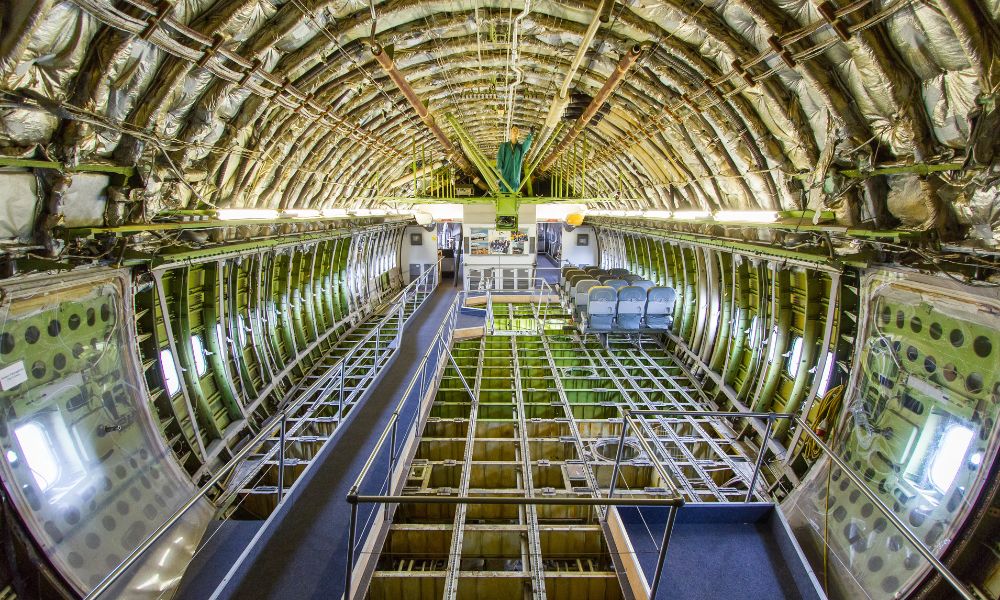

An aircraft fuselage is the central body of the airplane that holds all its parts together. It is typically a hollow tube-like structure with a rounded nose, connecting all the other components, including the wings, tail assembly, landing gear, engines, and more.
The fuselage also houses most of the plane’s passengers or cargo. Now that you know what an aircraft fuselage is, let’s look at how an aircraft’s fuselage works and how it helps airplanes fly.
An aircraft fuselage must be designed for rigidity and strength while being light enough to keep the plane from becoming too heavy to fly. This need means that modern aircraft fuselages are almost always aluminum alloy, which provides an excellent strength-to-weight ratio. Additionally, ribbing along the interior walls helps distribute stress away from any weak points in the structure while allowing air to flow freely during flight.
The primary functions of an aircraft’s fuselage are to provide a protective shell for passengers and cargo and to help create lift during flight. As air passes over the wings, the fuselage diverts part of it around the sides and top of the plane to keep it aloft. The shape and design of an aircraft’s fuselage play a major role in determining how much lift it can generate. This is why you’ll often see different shapes on various types of planes. For example, you may see a long slender tube for gliders vs. a wider body for commercial jets. Additionally, when airflow around the sides is smooth and uninterrupted (due to proper ribbing), it will create even more lift. This is because this decreases drag forces on the plane’s surface.
An aircraft’s fuselage helps the airplane fly by providing a secure and pressurized environment for passengers and crew members, protecting them from the conditions of the atmosphere. As one of the main structural components of an aircraft, it also helps create lift by providing structure for the wings, enables visibility for pilots through its numerous windows, and stores cargo in its belly.
Whether you’re a pilot or simply curious about how planes work, you want to understand what role this vital component plays in flight. Each airplane has its own unique set of specifications regarding size and shape, all of which ultimately contribute to its functionality.
There’s nothing worse than lighting a new candle and watching it sputter out, tunnel, or…
Discover how woven metal fabric transforms restaurant design with its versatility, from feature walls to…
Upgrading your workspace? Get inspired by design ideas for materials, lighting, and amenities, and tips…
In recent years, the global interest in peptides has surged due to their wide-ranging benefits…
Maximize your workspace without overspending. Explore practical ways to expand your office using smart layouts,…
Discover how to create a thriving STEM community through hands-on, collaborative projects that are perfect…